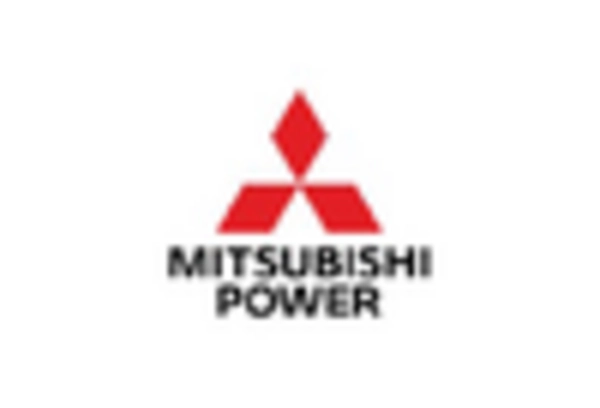Rising Energy Costs
The solid oxide-fuel-cell market is experiencing a notable surge in interest due to the rising costs of traditional energy sources. As fossil fuel prices fluctuate, businesses and consumers are increasingly seeking alternative energy solutions that offer stability and predictability in pricing. Solid oxide fuel cells, with their high efficiency and ability to utilize various fuels, present a viable option. In North America, the average cost of electricity has risen by approximately 15% over the past five years, prompting industries to explore more sustainable and cost-effective energy solutions. This trend is likely to drive investments in the solid oxide-fuel-cell market, as organizations aim to mitigate energy expenses while enhancing their sustainability profiles.
Environmental Regulations
The solid oxide-fuel-cell market is significantly influenced by stringent environmental regulations aimed at reducing greenhouse gas emissions. In North America, regulatory bodies are implementing increasingly rigorous standards for emissions, compelling industries to adopt cleaner technologies. Solid oxide fuel cells, known for their low emissions and high efficiency, align well with these regulatory requirements. For instance, the U.S. Environmental Protection Agency has set ambitious targets for reducing carbon emissions by 30% by 2030, which could catalyze the adoption of solid oxide fuel cells across various sectors. This regulatory landscape is expected to bolster the market, as companies seek compliance while also enhancing their environmental credentials.
Technological Innovations
The solid oxide-fuel-cell market is benefiting from ongoing technological innovations that enhance the performance and reduce the costs of fuel cells. Recent advancements in materials science and manufacturing processes have led to the development of more efficient and durable solid oxide fuel cells. For example, new ceramic materials are being explored to improve thermal stability and reduce degradation rates. In North America, research institutions and private companies are investing heavily in R&D, with funding exceeding $200 million in the last year alone. These innovations not only improve the viability of solid oxide fuel cells but also expand their applications in various sectors, including transportation and stationary power generation.
Decentralized Energy Systems
The solid oxide-fuel-cell market is increasingly relevant in the context of decentralized energy systems. As energy consumers seek greater control over their energy sources, the demand for localized power generation solutions is rising. Solid oxide fuel cells offer a compelling option for distributed energy systems, providing reliable and efficient power generation at the point of use. In North America, the trend towards microgrids and distributed energy resources is gaining momentum, with an estimated market growth of 20% annually. This shift is likely to drive the adoption of solid oxide fuel cells, as they can seamlessly integrate into decentralized energy frameworks, enhancing energy security and resilience.
Increased Investment in Renewable Energy
The solid oxide-fuel-cell market is poised for growth due to the increased investment in renewable energy sources. As North America transitions towards a more sustainable energy landscape, there is a growing emphasis on integrating fuel cells with renewable technologies such as solar and wind. This synergy can enhance energy reliability and storage capabilities. In 2025, investments in renewable energy projects in North America are projected to exceed $100 billion, creating a favorable environment for the solid oxide fuel cell market. The ability of solid oxide fuel cells to operate on renewable hydrogen further positions them as a key player in the future energy mix, appealing to investors and policymakers alike.


















Leave a Comment